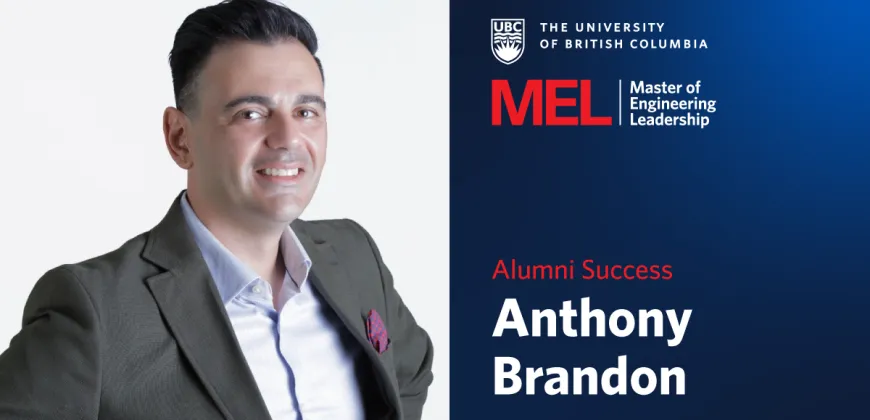Alumni Spotlight: Anthony Brandon
After 18 years working in the maritime industry, Anthony Brandon took a sabbatical to expand his knowledge of naval architecture, marine engineering and business leadership. He’s now combining his professional experience with the knowledge he acquired in the program in his new role at Harland & Wolff Group as a Naval Architect in a lead integration function.

Eighteen years ago, during the second year of his undergraduate degree in computer-aided engineering, Anthony Brandon was employed by York Navy Systems as a Naval CBRN and HVAC&R systems design engineer – a position that launched an impressive career in the marine industry.
After working at York Navy Systems he was employed as a Senior Design Appraisal Surveyor for Lloyd’s Register for over eight years, and then for the Royal Yachts of the Sultanate of Oman as Special Projects Officer, where he led marine engineering activities for new ship construction and the refit of existing vessels.
“I chose to take a year-long sabbatical to pursue my ambitions of advancing my knowledge in naval architecture,” he says.
“While I considered several master’s program around the world, the only program that delivered what I wanted to pursue was the MEL program at UBC. If you consider enrolling, you will find that the MEL program seamlessly integrates naval architecture with marine engineering and business leadership. No other master’s degree offers this.”
Covering all stages of shipbuilding life cycle
The Master of Engineering Leadership (MEL) in Naval Architecture and Marine Engineering covers all stages of shipbuilding life cycle – from initial design requirements and vessel construction to operations, maintenance and eventual retirement. These courses are complemented by business and leadership classes offered through UBC Sauder’s Robert H. Lee Graduate School that explore organizational leadership, strategy and innovation, and sustainability and leadership.
Students have significant flexibility on major assignments to work on topics of interest to them. For an in-depth research project, for example, Anthony and fellow student Pezhman Ghalich worked with a classification society to develop a design plan appraisal methodology that can be used by plan appraisal surveyors to predict the inclination of a ship at sea and understand maximum inclines and associated accelerations under which engines and auxiliary machinery can safely operate.
A job that integrates business leadership with naval architecture and marine engineering
Before he graduated, Anthony was approached by Harland & Wolff and offered a job as a Naval Architect in a lead marine systems integration role at their headquarters in London.
“I am engaged in a progressive internal and external approval of commercial and naval Ship Build Systems Integration Strategy to help de-risk and enable the physical and functional outcomes for the Harland & Wolff Group,” he says.
“This involves leading the development of progressive verification and validation matrices, including integration test, evaluation and acceptance frameworks as critical success factors to deliver a highly efficient build, unit assembly, test, commissioning and progressive acceptance methodology for new ship build platforms.”
Anthony says that the MEL’s engineering and business curriculum contributed to his success in his role.
“I am using the knowledge I gained in these classes weekly if not daily. The project management class was superb. And the focus on environmental sustainability and social values has been incredibly helpful. For every project Harland & Wolff bids on, a considerable percentage of the weighting is on environmental sustainability and social values.
We have to show how our yards are sustainable and provide evidence of how this connects to the UN’s Sustainable Development Goals. I covered similar content in my final assignment in Justin Bull’s sustainability and leadership class – a trial run for some of the work I am doing now”.
Balanced mix of naval architecture and marine engineering
He heartily recommends the program to individuals who want to gain the latest industry knowledge and a broad interdisciplinary perspective.
“The program gives you a balanced mix of naval architecture and marine engineering, which is very helpful given that the maritime industry tends to be very siloed,” he says.
“That integration is what this industry needs. It’s definitely a program suited for preparing professionals for the challenges and opportunities of shipbuilding 4.0.”
–
Take the steps to join the next cohort of engineering leaders. If you haven’t already, assess your eligibility and sign up for the upcoming information session to learn how to submit a strong application. Learn more about this innovative master’s program:



